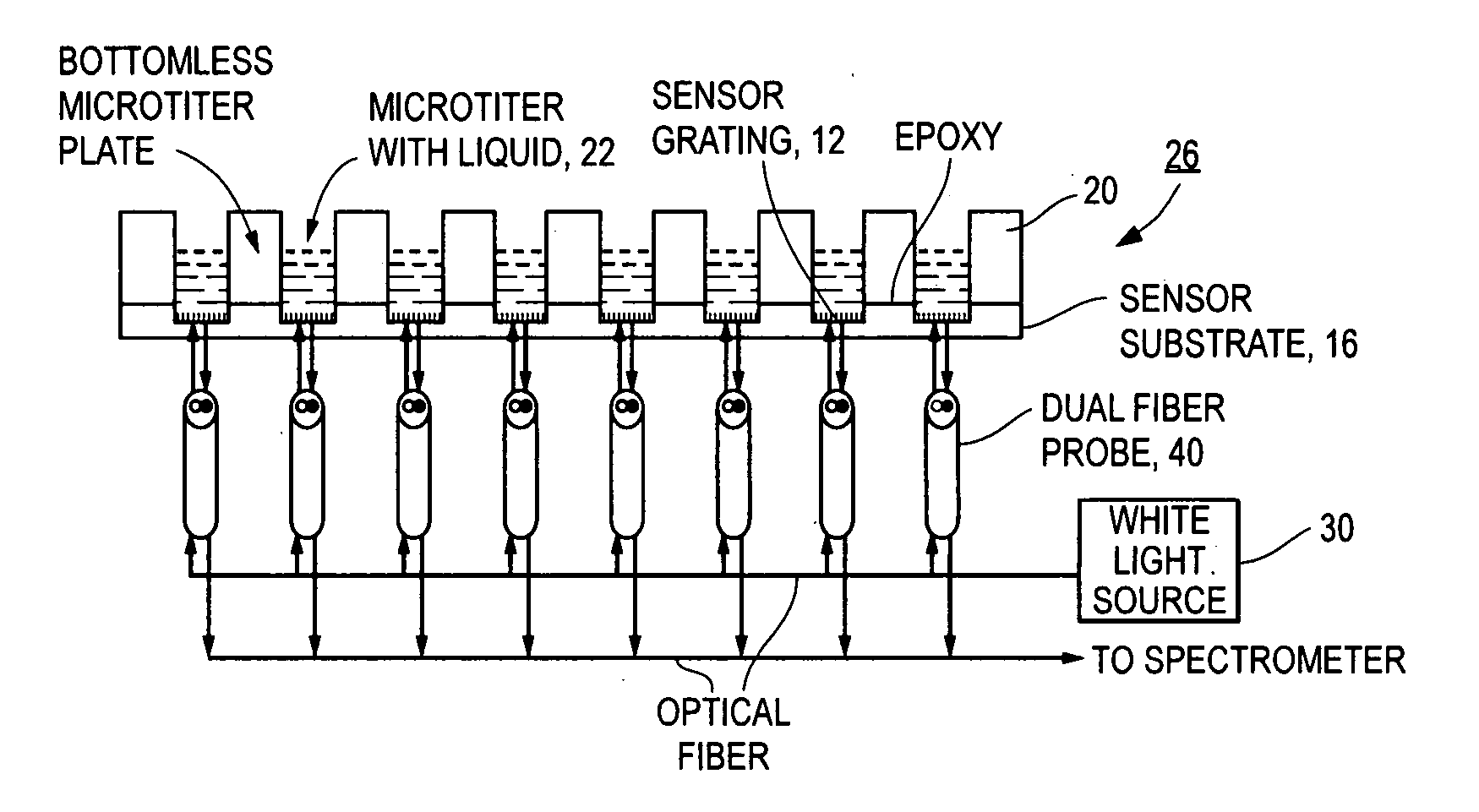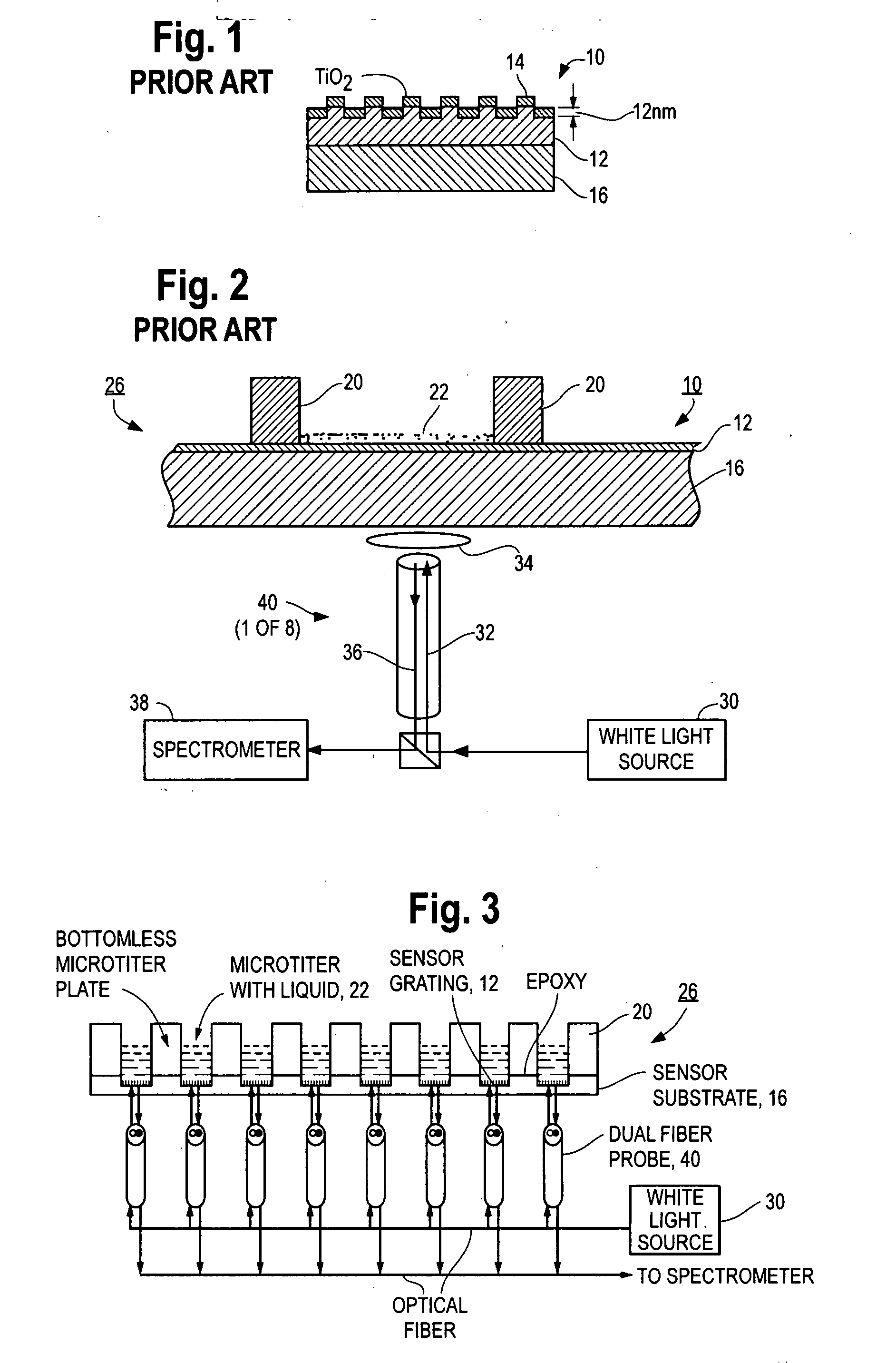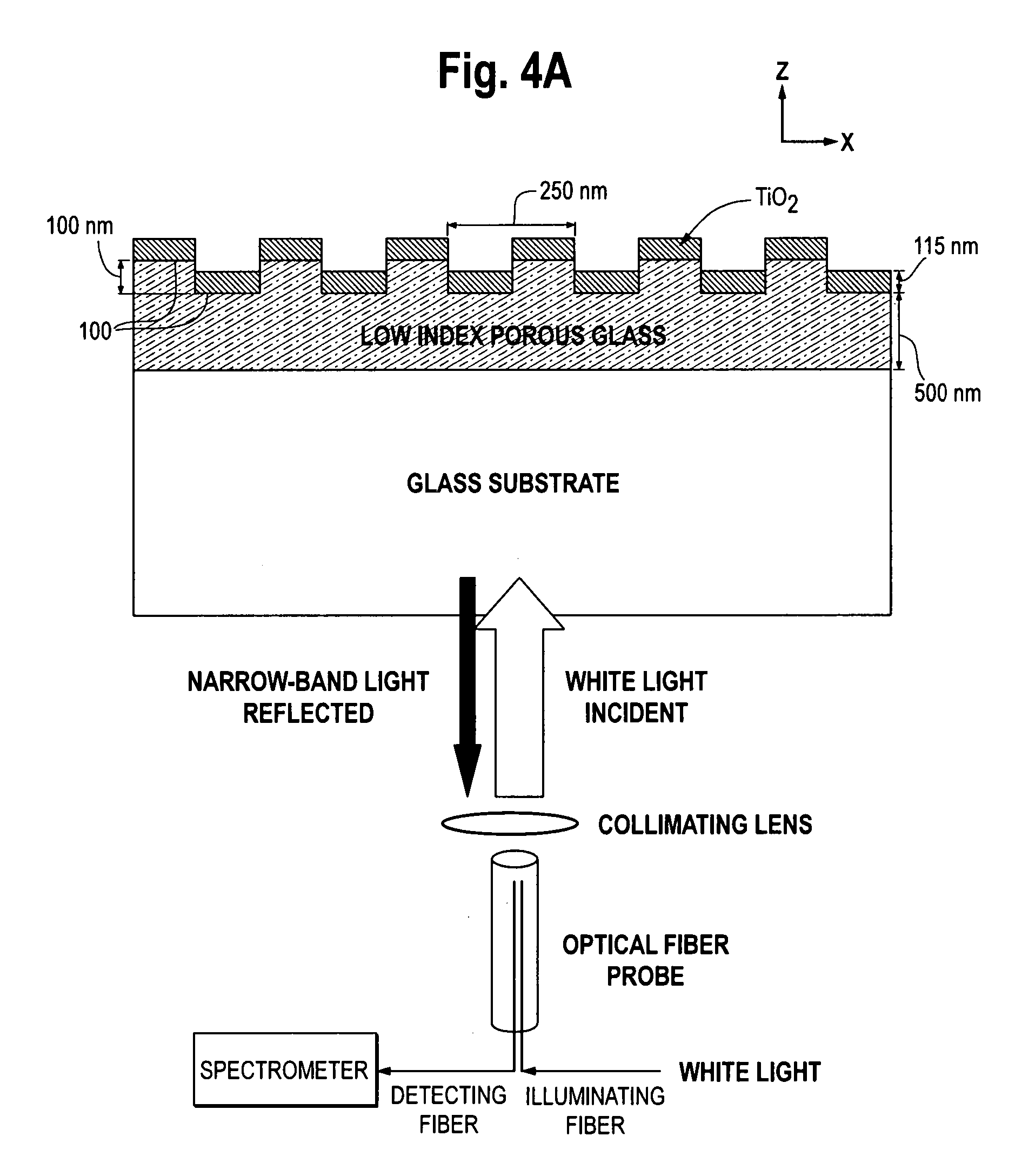[0020] This invention is directed to biosensors based on photonic-crystals having a
surface grating structure exhibiting a peak
wavelength value in the near-
ultraviolet wavelengths. Such biosensors are characterized in having a more tightly confined resonant
electric field in response to incident light at the surface of this biosensor as compared to previously fabricated near-
infrared photonic-
crystal biosensors. This change in the resonant electric field, i.e., more tightly confined at the surface of the biosensor, provides an improvement of over 4.5 times in terms the ratio of the surface-sensitivity of the biosensor to the bulk-sensitivity of the biosensor as compared to a prior art
photonic crystal biosensor exhibiting a peak
wavelength value in the near-
infrared. Accordingly, the
photonic crystal biosensor of this invention enables enhanced detection resolution for biomolecules, small molecules, or other analytes in low or ultra low concentrations which are adsorbed on the biosensor surface. The biosensors of this disclosure are a significant step forward towards the ultimate goal of a biosensor capable of single molecule resolution.
[0021] For photonic crystals of the type of this disclosure, the spectral location of peak reflection, or peak-
wavelength value (PWV), is readily tuned by changes in the
optical density of the medium deposited on the sensor
grating surface
lying within the range of the evanescent electric field. Therefore, bulk
refractive index (RI) changes of the cover medium will induce a shift in the PWV, as will any thickness or density changes of a surface-bound biomolecular layer. Since bulk solution RI variations are a significant source of
noise for surface-based optical biosensors, a higher ratio of surface-to-bulk sensitivity will consequently yield enhanced detection resolution. Accordingly, the biosensor designs of this disclosure maximize the PWV shift in response to a given biomolecular
monolayer which is deposited on the surface of the biosensor, while simultaneously limiting sensitivity to RI variations of the bulk media.
[0022] In one aspect, a photonic crystal biosensor takes the form of an optically transparent substrate, and a relatively low index of
refraction material formed in a
periodic grating structure applied to the substrate. The low index of
refraction material may optionally take the form of a porous
dielectric material such as a spin-on glass, such as Honeywell “NANOGLASS”™. A relatively
high index of
refraction material (e.g., TiO2) is deposited onto the low index of refraction
grating structure. The grating structure period and
physical structure, and the thickness of the
high index of refraction material, are selected such that the sensor produces a substantial confinement of the electric
field intensity due to light directed to the biosensor substantially at the surface of the
periodic grating. An example of such confinement is demonstrated for a one-dimensional periodic
surface grating in FIG. 4A. Furthermore, a reflection maximum at a resonant wavelength of the biosensor occurs in the near-
ultraviolet portion of the spectrum (e.g., k approximately in the range of 280-525 nm). Additionally, the biosensor grating structure and high and low index of refraction materials are selected to result in a biosensor which has a relatively
high surface to bulk sensitivity ratio thereby improving the ability of the device to detect low concentrations of biomolecules, analytes, and / or and small molecules deposited on the surface of the biosensor.
[0025] In another aspect, a method is disclosed of fabricating a
highly sensitive biosensor comprising the steps of: a) conducting a nanoreplication process by which a relatively low index of refraction material is patterned on an optically transparent substrate as a periodic
surface grating structure; b) depositing a relatively
high index of refraction material onto the periodic surface grating structure; c) wherein the grating structure period and
physical structure, and high and low index of refraction materials are selected, such that the sensor produces a substantial confinement of the electric
field intensity due to light directed to the biosensor substantially at the surface of the
periodic grating and wherein a reflection maximum at a resonant wavelength occurs in the near-ultraviolet portion of the spectrum, d) and further wherein the sensor grating structure period and high and low index of refraction materials are selected to result in a biosensor which has a relatively
high surface to bulk sensitivity ratio thereby improving the ability of the biosensor to detect low concentrations of biomolecules, analytes, and / or and small molecules deposited on the surface of the biosensor.
 Login to View More
Login to View More  Login to View More
Login to View More 


